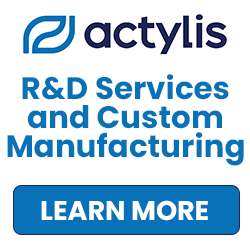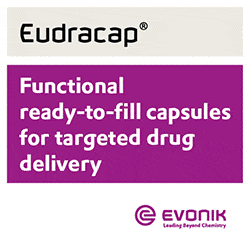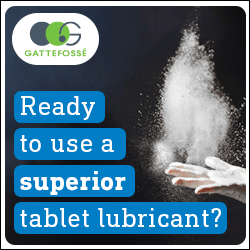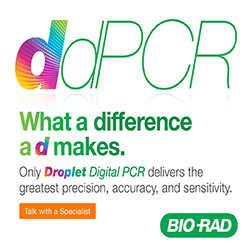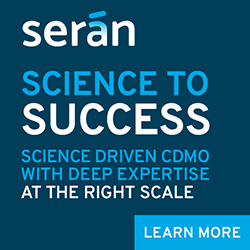MediWound Ltd.: Developing a New Class of Biologic Enzymatic Therapeutic Products to Debride Wounds


Ofer Gonen, Chief Executive Officer, MediWound
MediWound (Nasdaq: MDWD) specializes in the development, production and commercialization of rapid and effective biologics that improve existing standards of wound care. The company aims to enhance patient experiences while reducing costs and unnecessary surgeries.
Drug Development & Delivery recently interviewed Ofer Gonen, Chief Executive Officer of MediWound, to discuss the company’s innovative approach to debridement.
Q: Tell us about the importance of debridement and the founding of MediWound.
A: Debridement is the process of removing dead or non-viable tissue from burns and wounds and is essential for healing. While there are multiple different techniques for debridement, surgical removal of the dead tissue is the most common. However, for many patients, surgery is not always the best or most preferred option.
A drug for enzymatic debridement has been available for over 50 years, and while it is widely used in the United States, it is not considered to be very effective, limiting its utilization. MediWound is changing that, offering a novel biologic drug that provides quick, safe, and effective debridement.
Research has explored various enzymes for debridement, with Bromelain—an enzyme derived from pineapple stems—proving to be one of the most effective. However, due to its high activity and volatility, it was historically challenging to stabilize and package. Therapeutic treatments typically require a stable shelf life to ensure they are ready for use when needed and can be easily applied.
Due to these challenges, Bromelain was largely overlooked as a commercially viable product. However, the founders of MediWound saw its potential and developed a patent portfolio focused on lyophilizing Bromelain and other enzymes from pineapples into a stable powder. It took us over 10 years just to be able to develop the process to manufacture this powder in a way that resulted in the level of batch-to-batch consistency required for regulatory approval of a drug. We then perfected the process of reconstituting this powder at the site of care. This breakthrough formulation proved highly effective for debridement of non-viable tissue, creating a powerful, ready-to-use commercially viable treatment.
After another 10 years, our first drug, NexoBrid®, was approved and became one of the few purely botanical drugs in the market.
NexoBrid is an FDA and EMA-approved orphan biologic for eschar removal for deep partial-thickness and/or full-thickness thermal burns in both adults and children. Next up for us is using the same drug product but in a lower concentration and a different formulation as a debridement treatment for various chronic wounds.
Q: How is NexoBrid used to treat burns?
A: Although burns make up a relatively small portion of the global wound care market, the need for effective treatments is immense due to the severity of burn injuries. We have dedicated substantial resources to addressing this critical unmet need, recognizing the profound impact it can have on patients’ lives.
In surgical burn tissue debridement, physicians often face the challenge of distinguishing between what is viable and non-viable, leading to the removal of all the tissue down to a certain level. This process can remove tissue that doesn’t need to be removed, often leads to excessive blood loss, and of course has all the other negatives of surgery to go along with it.
NexoBrid offers an important alternative. As a topical treatment, it selectively targets and removes only dead tissue, preserving healthy tissue in the process. This not only minimizes the need for extensive surgery but also reduces blood loss and helps reduce scarring. Moreover, NexoBrid can be applied immediately by health teams without the need for an operating room or general anesthesia, thereby shortening hospital stays and associated costs.
NexoBrid is administered in up to two applications, each lasting four hours. The first application can cover up to 15% of total body surface area (TBSA). A second application of NexoBrid can be applied 24 hours later for a combined total coverage of 20% of TBSA.
NexoBrid is especially valuable in mass casualty events, as we’ve witnessed around world, including Ukraine, Israel, Italy and other locations. The treatment is also included in the US national emergency stockpile, highlighting the significant role it can play in disaster response.
Notably, NexoBrid recently received an FDA label extension for eschar removal in pediatric patients aged newborn through eighteen with deep partial- and/or full-thickness thermal burns. This young demographic is important as a crucial benefit of enzymatic debridement is the reduction of scarring that often comes with surgical debridement. From a humanistic perspective, use of NexoBrid removes the trauma associated with surgery, and for young children and their families who are already dealing with the trauma of the burn itself, this is incredibly important.
Q: What is the competitive landscape for NexoBrid?
A: NexoBrid has a very compelling competitive profile in the debridement market, where there are few non-surgical options. With regard to enzymatic debridement, the existing product would only be used on less severe burns, so is not considered a competitor for NexoBrid. The main competition is surgery, which has been the standard of care for 100 years. In clinical trials, NexoBrid delivers effective results 93% of the time with just a single four-hour application. Moreover, much Health Economics Outcomes data has been collected, which demonstrates that when considering the total cost of care, including hospitalization and operating room expenses, NexoBrid offers substantial savings relative to those related to surgery. It not only reduces direct surgical costs but also lowers associated expenses, making it a cost-effective solution for treating severe burns.
Given the relative benefits of our non-surgical solution, we are seeing that where it is used, it is becoming a standard of care.
Q: What other products are in the pipeline?
A: Utilizing this core biotherapeutic bromelain-based enzymatic platform technology, MediWound has developed a strong R&D pipeline, including our lead drug under development, EscharEx®. EscharEx® is a Phase 3-ready biologic for the debridement of chronic wounds, offering significant potential advantages over the dominant $360+ million product and an opportunity to expand the market.
Chronic wounds are common among patients with diabetes and those with vascular conditions that impair blood circulation, leading to diabetic foot ulcers and venous leg ulcers. These patients typically have other comorbidities, making wound healing challenging. Their wounds often become complicated by necrotic tissue, which can harbor harmful bacteria. The standard of care focuses on shifting these wounds into an acute healing process, and much of the time this all starts with debridement. Chronic wounds represent a significantly larger market compared to burns.
Additionally, we are working on a treatment for basal cell carcinoma, where we’ve seen early success in Phase 1/2 testing. We are currently perfecting the drug delivery with the goal that this treatment could potentially replace surgery for certain patients.
Q: What feedback have you received from the market?
A: NexoBrid is approved and used in more than 42 international markets. We have received positive feedback from physicians and patients alike, having helped to save lives during wartime while providing a surgery-free option to everyday people who unfortunately suffer severe burns.
With regard to EscharEx, for our venous leg ulcer Phase 3 we’ve entered into research collaborations with important global medical players including Molnlyncke, Solventum (formerly 3M) and MiMedx, who appreciate the quick and effective nature of our technology in debriding chronic wounds, which leads to faster healing. We expect to enter into additional collaborations as we start preparing for our diabetic foot ulcer study.
Q: What are the next milestones for MediWound?
A: We recently completed the construction of our new, state-of-the-art GMP-compliant manufacturing facility in Israel. With full operational capability planned for 2025, this expansion will increase manufacturing capacity sixfold to meet the growing global demand for NexoBrid.
In the US alone, due to the efforts of our distribution partner Vericel, around 70 burn centers have completed submissions to Pharmacy and Therapeutics (P&T) committees, with more than 40 centers already obtaining approval, and nearly all of those placing initial product orders.
We are also continuing our work with the U.S. Department of Defense to advance NexoBrid as a non-surgical treatment for field care burns.
Regarding EscharEx and debridement of chronic wounds, our Phase 3 trial on venous leg ulcers (VLUs) is on track to begin imminently. We also recently received €16.25 million from the European Innovation Council to fund our second indication – diabetic foot ulcers (DFUs). This funding supports our continued development of EscharEx and expansion into new markets and indications.
It’s certainly an exciting time for the company as we continue to expand our global footprint and develop new needed wound treatments.
Total Page Views: 1197






